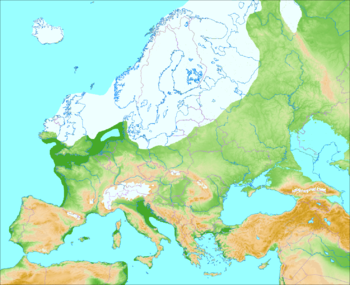Since my own studies have recently led me to a more in-depth look at Zoroastrianism, I recently asked the Cs some questions about it in the 14 August 2016 session. The responses were furiously interesting and I am here going to quote comments to that session to open this thread:
mkrnhr said:Thanks for the very very very interesting session.
Q: (L) […] So, I guess the first question I want to know is: Is there any possibility that Akhenaten was influenced by Zoroastrianism? Is that a possibility?
A: Not just a possibility, but a certainty.
And that’s how my pet scenario is reduced to dust. But it makes sense that the Amarna adventure didn’t originate out of the blue. I wonder however if the raiders on cattle the “prophet” seems to condemn are the same Hapiru condemned by the other kingdoms in the region…
Q: (L) If that's the case, how was that possible?
A: The ancient world was quite "well connected".
E. Cline calls this inter-connectedness the first Globalisation. The empires at that time where so connected, some Egyptian artefacts were found in Scandinavia. But maybe connectedness here refers to connectedness to higher densities?
Q: (L) Okay... Can you get me any closer to a clue here?
A: Check the Hurrian connection.
Could it be a family connection? Amenhotep3, who started the Amarna “reform” married a Mitanni princess (KeluHepa) then another (Tadu-Hepa) before Akhenaten married this latter. Even the king of Babylon pleaded with the Egyptian king to have matrimonial relationships with apparently no success.
From the Amarna correpondance:
EA 17 said:To Nibmuaria [Amenhotep 3], King of Egypt, my brother, say: Thus says Tushratta, King of Mitanni, your brother. It is well with me. May it be well with you; with Kelu-Heba [Married by Tushratta's father to Amenhotep 3], my sister, may it be well; with your household, your wives, your sons, your nobles, your warriors, your horses, your chariots, and throughout your land may it be very well.
[...] And my father, because of his love, has given my sister to you. And who else stood with my father as you did? The very next year, moreover, my brother's . . . the whole land of Hatti. As the enemy came to my land, Teshub [Storm god], my lord, gave him into my hand, and I destroyed him. And not one of them returned to his own land.
Behold, one chariot, two horses, one male servant, one female servant, out of the booty from the land of Hatti I have sent you. And as a gift for my brother, five chariots (and) five teams of horses I have sent you. And as a gift for Kelu-Heba, my sister, one set of gold pins, one set of gold earrings, one gold idol, and one container of "sweet oil."
I have sent her. [...]
Around the same period a Hittite king decides to adopt a God of Amurru and goes to create his holy city somewhere south (still not found).
Q: (L) The Six Bounteous Immortals, or I guess what we could say archetypes or sixth density?
A: Yes
Maybe that’s where the Sufis got the ideas of the beautiful names of God? There are shades of Zoroastrianism in pre-Socratic philosophy as well (fire/mind etc.)
A: The Indian Vedas will give clues.
Q: (L) Maybe he wasn't wrong when he said that the daevas were demons. Were the daevas like STS beings?
A: Close
Q: (L) Were they like 4th density STS?
A: Yes
It is interesting that it’s as if the Daevas/Devas were gods who interacted directly in human affairs while the Ahuras/Asuras where more abstract “Gods”, less involved with interfering with humans’ freewill, and more as archetypal characteristics of the creation (thought forms maybe). The subsequent introduction of Mitras and his savage Bear might have been a way to take into account the Human-Cosmic connection after some catastrophic events.
These are just some random thoughts here and there.


